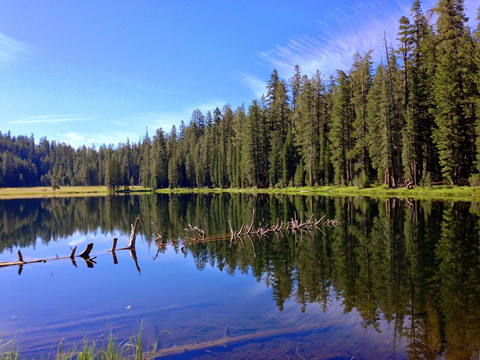I recently came across Brian Merchant’s blog about 7 classic American “Green” works of literature here: https://planetgreen.discovery.com/work-connect/read-american-environmental-classics.html. In the list: Walden by HD Thoreau, Silent Spring by Rachel Carson, Leaves of Grass by Walt Whitman, Steinbeck’s Grapes of Wrath, the Lorax by Dr. Seuss, and Stegner’s Wilderness Letter (see: https://wilderness.org/content/wilderness-letter).
It made me think of what we rely on as our environmental “ideals” in the fields of outdoor, environmental, and experiential education. Like Merchant’s list above, my guess is that our field would be filled with the usual suspects: Thoreau, Muir, Abbey, Leopold, Carson, etc. It’s a fine list, to be sure, but with significant limitations. First, it is filled, with the exception of Carson, with archetypal “dead, white guys.” But more importantly, I am not sure we have fully wrestled with what historian William Cronon famously called “The Trouble with Wilderness” in our field. What is the cost of relying on “wilderness” as our environmental ideal?
The American environmental movement (and, by association outdoor, environmental, and experiential education) has had a love affair with Romanticism. There are good reasons for this: the Romantic movement gave us Rousseau’s Emile, Emerson and Thoreau’s philosophy of transcendentalism, and many great works of literature and the visual arts. But, there is a darker side to this love affair. As scholars such as Cronon have made clear, the Romantic movement in many respects “invented” the idea of “wilderness.” Rather than wilderness being something “real” out there in the world, it was created. The how’s and why’s of this are much more involved than a blog post but suffice it so say that the emphasis on sublime “wilderness” comes with a cost. By definition, it separates humans from nature by suggesting that wilderness is a place empty of human presence (see the definition in the 1964 Wilderness Act). And, as a consequence, only those places considered “empty” enough, “untouched,” and “wild” are considered sublime, special, and worthy of our protection. But history does not bear this out. In fact, we removed American Indian populations from areas of the west only then to designate them “wilderness.” In fact, it is a peculiarly American concept that views Nature as outside of and apart from Culture. In short, when we think of the environmental ideal as that classic picture of the lone white male standing on a summit staring out into vastness in Backpacker, Sierra Club, or Outside Magazines we lose the ability to define environmentalism as something everyone can take part in. But isn’t that the conundrum? Many of us like the special quality of wilderness as we see and experience it—its an exclusive game by definition.
But can we continue to afford such an ideal? Environmental problems are no longer simply about wilderness protection or even Carson’s concern with DDT and bird populations. It is everything—all encompassing with a guaranteed ability to affect everyone and everything—from the safety of our peanut butter, to the ability to access clean drinking water, to energy security, and, at the grandest scale, global climate change. All education, as David Orr wrote, is environmental education.
It is high time outdoor, environmental, and experiential fields deal with the Romantic legacy in our thinking about things like “wilderness,” “nature,” and what we consider to be transformative in terms of a relationship with David Abram’s called the “more than human” world.
It’s time for a new list of “Green” classics. Here are a few that would make my list: Martin Luther King’s Presidential Speech to the Southern Christian Leadership Conference in 1967. I would include Aldo Leopold’s Sand County Almanac and Richard White’s controversial essay, “Are You An Environmentalist or Do You Work For A Living?” Rachel Carson’s Silent Spring would certainly make it. Terry Tempest William’s Refuge: An Unnatural History of Family and Place would make the short list as would David Orr’s The Nature of Design.
What might make your list?


